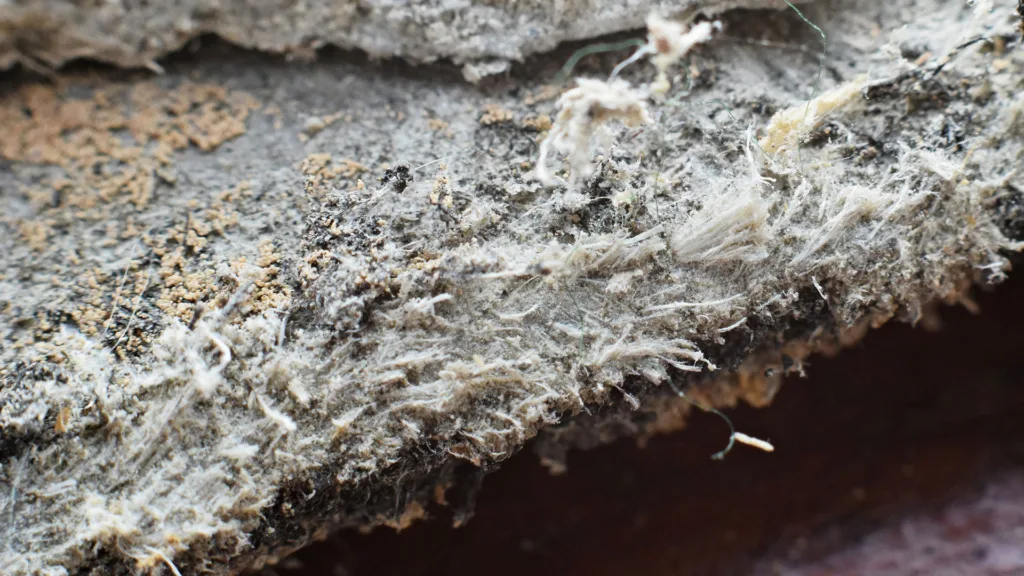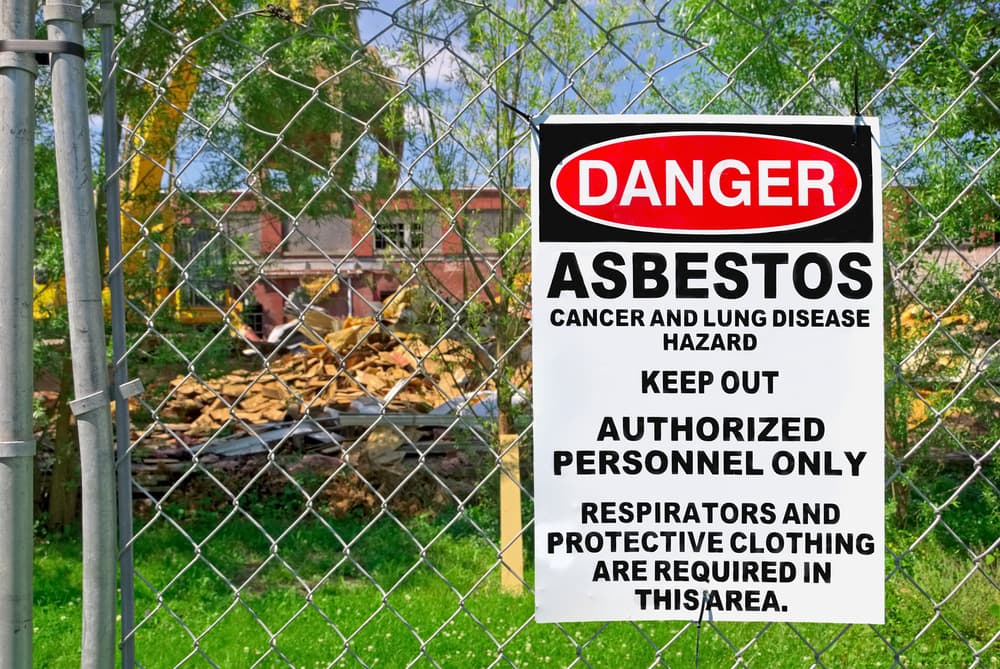Manufacturers and factory owners have known the dangers of exposure since the early 1900s, but the asbestos industry continues to flourish more than a century later. A long history of cover-ups, widespread industrial use of the fiber, and corporate lobbying has kept asbestos-containing products on the market in the United States despite global recognition of the substance as a carcinogen.
Revered for its resistance to heat and fire, asbestos earned the name “miracle mineral”. Its fibrous nature made it perfect for weaving into clothing, fabrics, and even paper in order to fireproof them. Seemingly miraculous, these fibers quickly became integral to the construction, industrial, and shipbuilding industries, and were commonly found in construction sites, naval ships, and factories worldwide.
Today, however, the “miracle mineral” has lost its reputation. By the 1970s, researchers identified asbestos fibers as the only known cause of mesothelioma cancer, a rare and deadly disease with no cure. In fact, research shows that even the briefest instance of exposure to asbestos fibers is enough to cause this life-threatening illness. While the asbestos industry has been greatly reduced thanks to the gradual imposition of regulatory laws and bans, several countries continue to manufacture, import, or use dangerous asbestos products.
Brazil, China, Russia, and Kazakhstan currently lead the world in asbestos mining and selling, often exporting their products to other countries. Mounting evidence of the link between asbestos exposure and mesothelioma led to a full ban in the European Union in 2005, and growing movement continues to push for a complete ban of all asbestos products in the United States.
History of Asbestos Manufacturing
bankEvidence of early asbestos use can be traced back to the Stone Age, and asbestos fibers can be found throughout history in Greece, Rome, and Egypt, where the fire-resistant substance was used in clay pots, fabrics, burial shrouds, and even paper. The substance naturally occurs on every continent in the world, and its fireproof and heat-resistant qualities made it desirable for centuries in everything from banknotes to Parisian Fire Brigade jackets in the 1850s.
Even early mining operations had their problems; the Greek and Roman slaves who were forced to mine and process asbestos fibers were known to have lung disease and difficulty breathing.
In 1876, miners discovered white chrysotile asbestos in Quebec, and opened the world’s first commercial asbestos mine, drawn by the large quantities available in the region and the boom in job creation thanks to mining. In fact, this initial Canadian operation would grow to be one of the largest asbestos mines in the world decades later.
Chrysotile asbestos remains the most commonly-used type of the fiber today, and is often found in things like ceilings and walls in homes and brake linings and gaskets in the automobile industry. As demand grew, mining operations became mechanized and industrialized around the globe, bolstered by the flourishing Industrial Revolution.
Industrial Revolution
As the Industrial Revolution of the late 1800s began, asbestos seemed too good to be true. The fibers were resistant to heat, chemical damage, water, and electricity, making it the perfect insulator for newly coined steam engines and boilers of the day. The versatile substance was perfect for a multitude of industrial applications, and soon asbestos was being used everywhere from homes to shipyards. From there, the asbestos industry only grew, and enjoyed nearly a century of widespread consumption. This industrial use became a staple of the asbestos industry, and institutions like the United States Military utilized the material heavily.
World War II
During World War II, asbestos use in the United States reached another peak. A huge increase in shipbuilding and weaponry needs meant that the U.S. Military wanted heat-resistant materials to stock their shipyards, and none of the branches were safe from exposure.
Nowhere was this exposure more prevalent and dangerous than in Naval shipyards. The fireproof qualities of asbestos meant extra protection for ships and cargo, and demand for asbestos products skyrocketed. Everything from the insulation on pipes to the paint coating the ship walls contained the carcinogenic substance, and the most dangerous places for exposure were below-deck compartments including boiler rooms, engine rooms, and ammunition storage rooms. Even sleeping quarters and mess halls contained dangerous levels of asbestos in paint and insulation, putting Navy personnel at risk wherever they were.
To this day, thirty percent of all people in the United States diagnosed with mesothelioma are veterans, particularly Naval shipyard workers. By far, the largest amount of military asbestos exposure occurred during World War II, but the exposure continued for several decades following the war. Veterans continue to be an at-risk group for mesothelioma, and most veterans who receive a diagnosis served in the Navy.
Peak U.S. Consumption and Heightened Research: the 1960s and 1970s
As early as 1906, company owners and manufacturers knew the dangers of asbestos, but it wasn’t until the 1960s that a flurry of evidence and studies began to create a definitive link between asbestos and mesothelioma. Mounting proof from doctors and researchers working with cancer patients indicated that there was a direct connection between asbestos and cancer. In 1964, Dr. Irving Selikoff established that link when he found that an excessive number of insulation workers had died from lung, stomach, colorectal, and mesothelioma cancers between 1943 and 1962. Asbestos-related diseases were finally beginning to be understood.
At the height of U.S. asbestos use, it could be found in around 3,000 products. While these were largely related to construction and industrial work in things like insulation, ceiling tiles, and drywall, textiles increasingly used asbestos as well. Products like rope, garments, and gloves incorporated the flame-resistant fibers, particularly in equipment for glassblowers and firefighters. By 1973, U.S. consumption had reached nearly 804,000 tons annually, with mines thriving on both coasts.
Banning Asbestos
Following the incriminating research and studies of the 1960s, movements to ban asbestos use strengthened in the United States. The creation of the Environmental Protection Agency (EPA) in 1970 meant that stringent regulations could be placed on the use of asbestos products across the country.
That same year, the Clean Air Act of 1970 established the National Emissions Standards for Hazardous Air Pollutants (NESHAP) and placed strict regulations on the milling, spraying, and disposal of asbestos. This marked the beginning of the EPA’s mission to eradicate asbestos use in the United States.
1976: The EPA’s Toxic Substances Control Act (TSCA) is passed by Congress. The act mandated that the EPA protect the public interest by restricting and monitoring toxic chemicals.
1986: The Asbestos Hazard Emergency Response Act makes it possible for the EPA to set standards for asbestos removal in school buildings across the country, and requires asbestos contractors to be trained and certified.
1989: The Asbestos Ban and Phase-Out Rule are introduced as a rule in the TSCA, marking the most comprehensive attempt at eradicating asbestos use in the U.S. to date. This rule attempts to ban the manufacturing, importation, processing, and distribution of asbestos.
The EPA aimed for a full ban with these acts, but lobbyists were able to reduce the ban’s scope. Their efforts excluded products with a “historic use” of asbestos, meaning that these items were allowed to be manufactured and sold, and that only new products were banned from using the substance.
1991: Asbestos industry lobbyists successfully see the 1989 ban overturned. Citing potential job loss and economic worry, they manage to convince the courts that the EPA’s ban is burdensome.
2002: King City Asbestos Company, the last US asbestos mine, closes in California, ending over a century of asbestos production in the United States.
2003: Seventeen countries adopt an asbestos ban, greatly reducing global demand.
2005: The European Union bans the use of asbestos in all new and existing products, with a time-limited single exception for diaphragms used in chlorine plants. This exception is set for review in 2007 and ultimately fails.
Despite efforts to curb dangerous asbestos exposure, the World Health Organization estimates that 125 million people experience exposure in their workplaces worldwide. When fibers deteriorate, they become what is known as “friable asbestos”, or asbestos that is easily crumbled into dust. This dust then fills the air, making even asbestos removal a risky procedure.
It is more important than ever for individuals to take action against asbestos companies and products. The EPA has proven that communities need to step up and speak out against the use of this lethal substance, and to push for a larger change in U.S. legislation to protect the lives of citizens.



